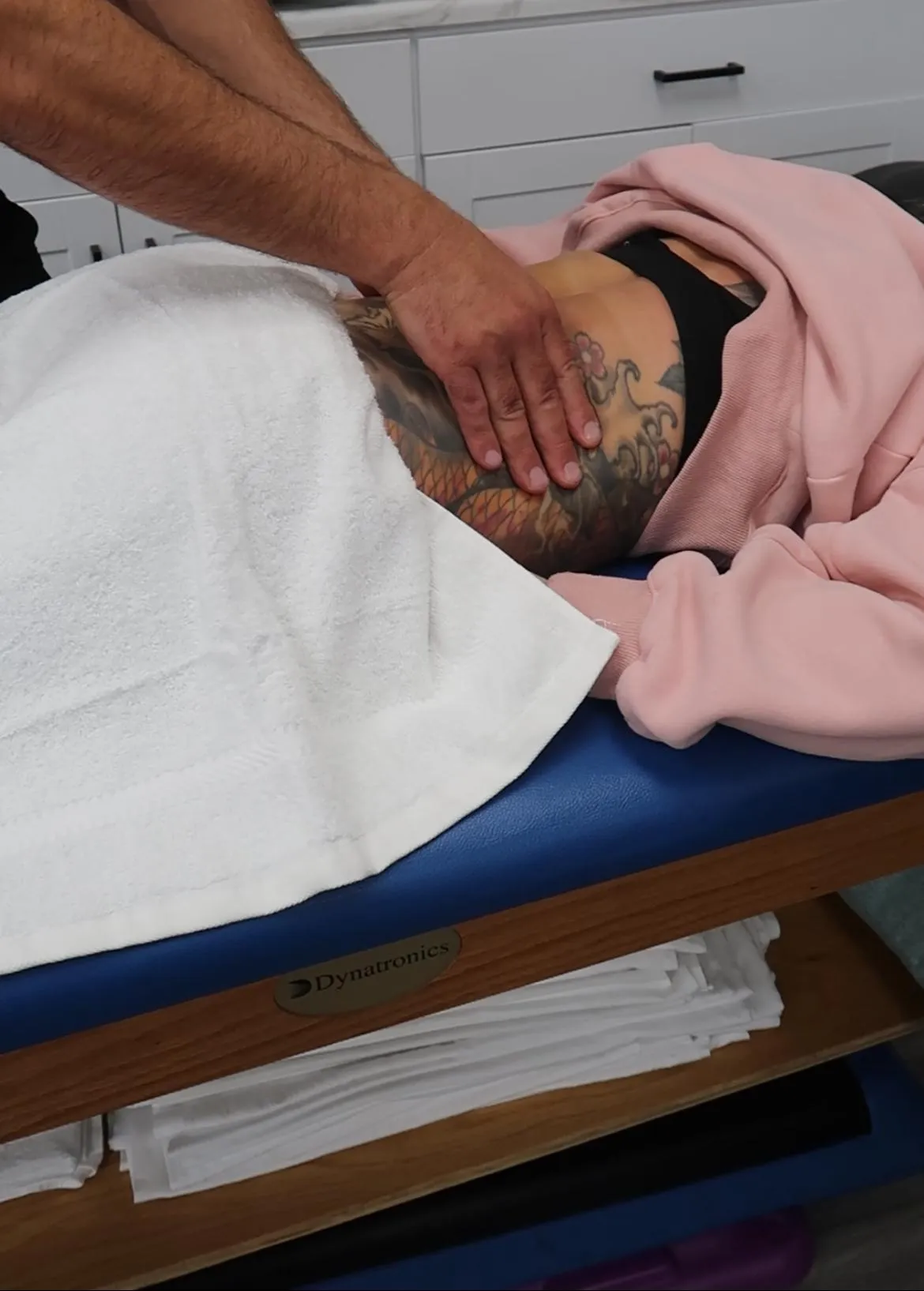
Welcome to Our Blog

How Sleep Position Affects Your Pain (and How to Fix It)
How Sleep Position Affects Your Pain (and How to Fix It)
If you wake up feeling stiff, sore, or in pain, your sleep position might be to blame. While sleep is meant to help your body recover, poor alignment during the night can put unnecessary strain on your neck, back, and joints. Over time, this can lead to chronic discomfort, poor posture, and even increased injury risk.
The good news? Small adjustments to how you sleep can make a big difference. Let’s break down the best and worst sleeping positions for pain relief and how you can optimize your sleep posture for better health.
Best & Worst Sleep Positions for Pain Relief
1. Back Sleeping: Best for Spinal Alignment
✅ Why It’s Good: Sleeping on your back evenly distributes weight across your body and helps maintain a neutral spine position, reducing pressure on your neck and lower back.
❌ Potential Issue: If you snore or have sleep apnea, this position might not be ideal.
How to Optimize It:
- Use a supportive pillow that keeps your head aligned with your spine.
- Place a small pillow or rolled-up towel under your knees to reduce lower back tension.
2. Side Sleeping: Best for Back & Neck Pain
✅ Why It’s Good: Side sleeping, particularly on your left side, promotes better circulation and reduces acid reflux. It also helps keep your spine in a neutral position when done correctly.
❌ Potential Issue: If your pillow isn’t supportive enough, it can cause neck strain. Side sleeping can also lead to hip or shoulder discomfort over time.
How to Optimize It:
- Use a medium-to-firm pillow that keeps your head aligned with your spine.
- Place a pillow between your knees to prevent your top leg from pulling your spine out of alignment.
- Switch sides periodically to avoid imbalances.
3. Stomach Sleeping: Worst for Back & Neck Pain
❌ Why It’s Bad: Sleeping on your stomach forces your neck into a rotated position and flattens the natural curve of your lower back, leading to strain and stiffness.
How to Minimize the Damage (If You Can’t Sleep Any Other Way):
- Use a very thin pillow (or no pillow at all) to reduce neck strain.
- Place a small pillow under your hips to maintain some lower back support.
- Consider gradually transitioning to side or back sleeping for long-term relief.
Additional Sleep Tips for Pain-Free Mornings
- Choose the Right Mattress: A mattress that’s too soft can cause your spine to sink, while one that’s too firm may create pressure points. Medium-firm mattresses tend to work best for most people.
- Stretch Before Bed: Gentle stretching or mobility exercises can help loosen tight muscles and reduce stiffness in the morning.
- Be Mindful of Your Pillow: If you suffer from neck pain, try a contoured cervical pillow designed to support the natural curve of your neck.
Need More Help? We’ve Got You Covered.
If you’re struggling with pain that’s affecting your sleep and daily life, our team at Impact Physical Therapy is here to help. Whether it’s neck pain, back pain, or joint discomfort, we’ll create a personalized plan to get you feeling better.
Schedule an appointment with one of our specialists at our Scottsdale or Peoria locations today!
At Impact Physical Therapy, we focus on YOUR entire system
to not only identify the source of your symptoms, but to also treat the root causes of your shoulder pain.
We have helped hundreds of patients just like yourself avoid surgery, and pain killers by providing a hands on approach. Whether you have tried physical therapy somewhere else, have had pain for years, use pain killers or have tried EVERYTHING …. WE CAN HELP YOU.
Get in for a Free Consultation and let us show you why hundreds of patients have succeeded and now live a happy and active life.
Become one of the hundreds of patients that we have helped get back to an active life!
Why Impact Physical Therapy?
At Impact Physical Therapy, we focus on your entire movement system to not only identify the source of your symptoms, but to also treat the causes of your shoulder pathology.
We feel so confident that you will love the experience – this is why we have a 100% satisfaction guarantee!
Become one of the hundreds of patients that we have helped get back to an active life!
What to Expect from Us:
One-on-one care with a Doctor of Physical Therapy
Individualized plan of care
Innovative techniques such as cupping, dry needling, and kinesiotape
Easy lines of communication
Fast results
Friendly environment where everyone knows your name
Clean, fun and memorable